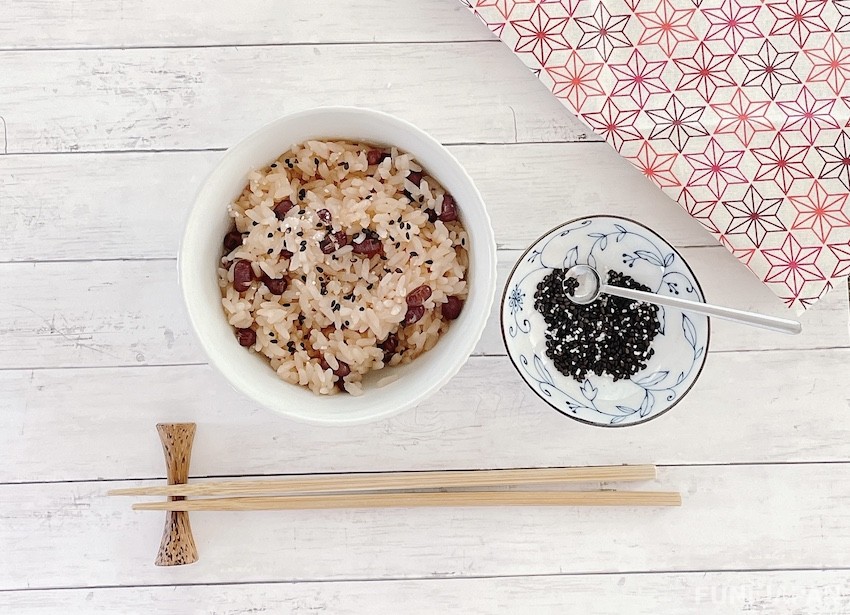
In Japanese homes, O-Sekihan (お赤飯, red rice) is often served for special celebrations. The reason is that the red color was believed to have the power of protection from bad fortune and bringing good luck. However, nowadays, most of the O-Sekihan is eaten for superstitious belief.
In this article, we will introduce the history of O-Sekihan and what kinds of celebrations O-Sekihan are served.
At the end of the article, there is a video of how to make O-Sekihan using a rice cooker, so be sure to read the article until the end ♪
About O-Sekihan (red rice)
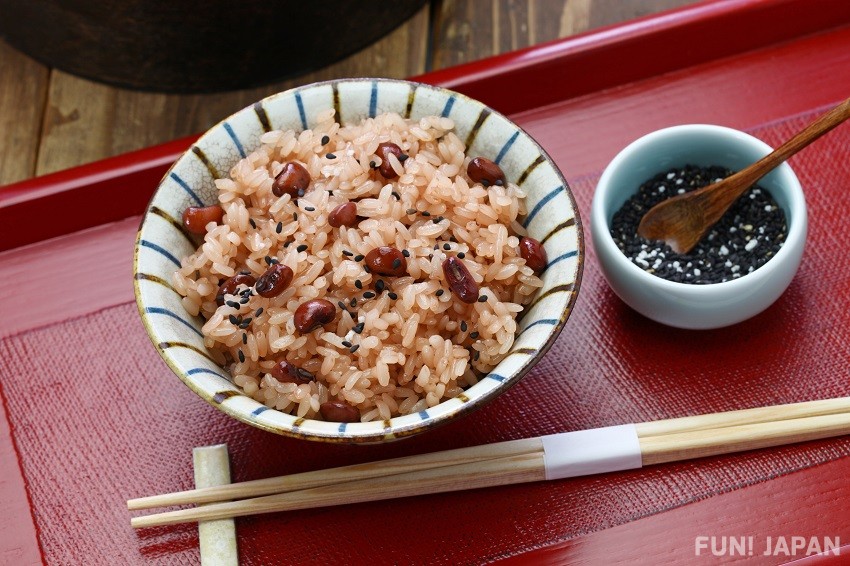
History and origin of O-sekihan
O-Sekihan is rice cooked with glutinous rice (もち米 / mochi-gome), azuki beans (小豆), and soup (汁) from the water used in the boiling of azuki beans. When the rice is cooked, it is called "O-Sekihan" because the rice is dyed in the red color of azuki beans.
Currently, the ingredients for O-Sekihan are glutinous rice and red beans. But in the past, red rice (赤米 / aka-gome) was used. Red rice is rice (Indica rice) that was introduced to Japan from the Chinese continent during the Jomon period ((13,000 BC - 400 BC)), and when cooked, it becomes a color just like O-Sekihan. In "The Pillow Book" (枕草子) from the middle of the Heian period (794 AD - 1185 AD), the food that is the prototype of red rice appears in the book as "Azuki-gayu" 小豆粥, red bean porridge). It was during the Muromachi period (1333 AD - 1573 AD) that O-Sekihan was eaten in celebrations. In the latter half of the Edo period (1615 AD - 1868 AD), it became widespread on the dining table of ordinary people on happy days.
Why eat O-Sekihan at the time of celebration?
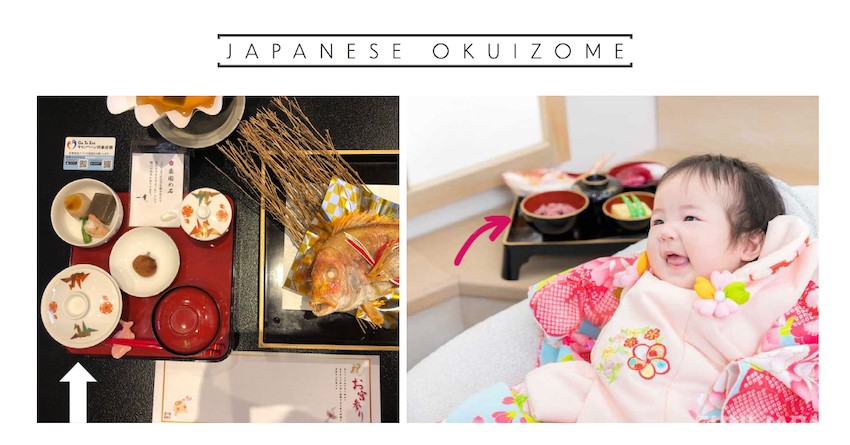
In Japan, it has long been believed that the red color has the power to exterminate evil and avoid disasters. In addition, since rice was a high-class food, it seems that there was a custom of cooking and serving red rice to God. There is also a habit of eating O-Sekihan as a "regaining luck", wishing for good luck when something bad happened. Nowadays, it is common to eat red rice mainly when celebrating something or for superstitious belief.
O-Sekihan is often eaten at the following celebrations
- Obi-iwai (帯祝い: Obi celebration): A ritual to wrap the obi to pray for the safe growth of the fetus in the 5th month of pregnancy.
- Shussan-iwai (出産祝い: Giving-Birth celebration), Tanjo-iwai (誕生祝い: Birth celebration)
- Hatsu-zekku (初節句: The first "Sekku" after a baby is born * "Sekku" means "the day the season changes")
- O-Kuizome (お食い初め: Beginning of eating; a ritual performed on the 100th day after the baby's birth with the wish that the child "won't have trouble eating for the whole life")
- Shichigosan (七五三: a celebration for festive custom held on November 15th for 3 and 5 years old boys and 3 and 7 years old girls)
- Celebrations for university entrance, graduation, employment, coming-of-age ceremony, etc.
- Joto-shiki no Iwai (上棟式の祝い: celebration of ridgepole raising ceremony. Joto (上棟) is the action of attaching a timber called "munagi" (棟木: ridgepole of the roof) to the highest position of the roof when building the building. Joto-shikiga no Iwai is a ceremony to report of completion up until ridgepole raising part and to thank the deities, and pray for the safety of the building until its completion and for the building to stand tall for a long time.)
- Kanreki-iwai (還暦祝い: 60th birthday celebration)
- Koki-iwai (古稀祝い: 70th birthday celebration)
- Kiju-iwai (喜寿祝い: 77th birthday celebration)
- Beiju-iwai (米寿祝い: 88th birthday celebration)
- Hakuju-iwai (白寿祝い: 99th birthday celebration) and etc.
O-Sekihan recipe & how to make (with video)

This time, we will introduce how to make simple O-Sekihan using a rice cooker.
Ingredients for O-Sekihan (for 4 people)
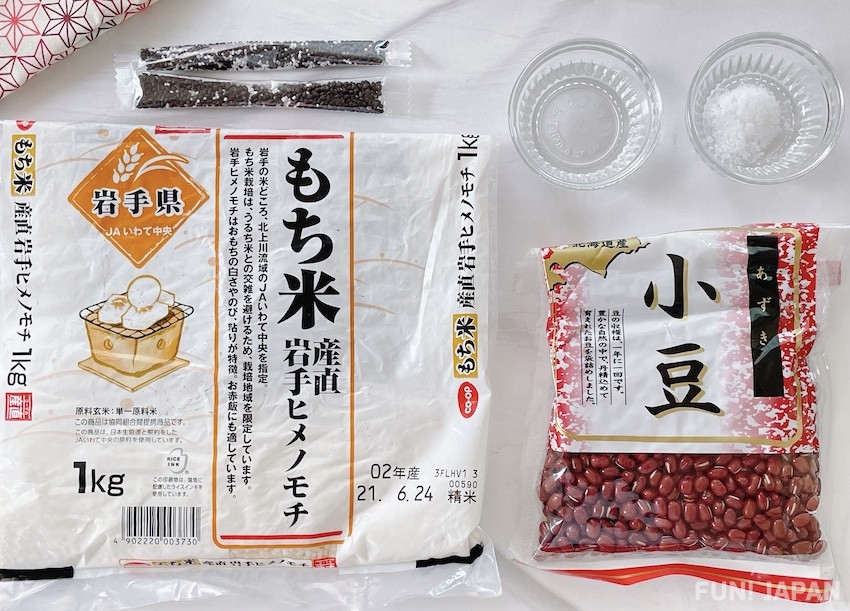
- Glutinous rice ... 2.5 cups
- Cowpea or azuki red beans ... 50g
(A)
- Liquor ... 1 tbsp
- Salt ... 1 teaspoon
★ You may add a little black sesame and salt as seasoning ➞ black sesame salt from Japanese supermarket or 100-yen shop will do the same.
How to make O-Sekihan (for 4 people)
1. Preparation of cowpea (or azuki red beans)
- First, wash 50g of cowpea and drain the water. Place in a pot, add 400 ml of water and heat using medium heat.
- When it boils, turn the heat down to the lowest and boil the cowpea for 20 minutes. (even if the water spilled out of the pot, you don't need to add more water.)
- After 20 minutes, try eating a grain of beans and see if it's cooked all the way through. (If it is not cook thoroughly, boil it for an additional few minutes while watching how it turns out.)
- If it is cooked, remove the pot from the stove and let it cool. Even while it is cooling down to the temperature of human skin, it will be cooked a little from the internal heat and the beans will become puffy.
2. Preparation of glutinous rice in O-Sekihan
- While boiling the cowpea, lightly wash the glutinous rice and let it soak. (Approximately 30 minutes to completely soaked)
- When the boiled soup used in step ➀ has cooled and the glutinous rice is completely soaked, raise the glutinous rice in a colander to drain it, transfer it to a rice cooker, and add the entire amount of boiled soup there. (* Since the cowpea is added after the water adjustment is finished, make sure that only the soup water is added at this time!)
- After adding the whole amount of cowpea-boiled soup, add 1 tablespoon of liquor from the seasoning (A) first, and add water up to the scale for 2.5 cups of rice. (If the rice cooker has a special cooking course, please use the scale as a reference.)
- After adjusting the water content, add 1 teaspoon of salt from the seasoning (A) and mix gently.
- Finally, spread the cowpea on top and set them nicely in the rice cooker.
3. Finishing O-Sekihan made with a rice cooker
- After setting everything in the rice cooker, press the rice cooker start button. (If the rice cooker has an Okowa course for cooking things along with rice, choose it)
- When the O-Sekihan is cooked, mix the whole of it from the bottom and it's done. When eating, sprinkle some black sesame seeds or salt and pepper on it!
O-Sekihan that is easier to make than using a rice cooker
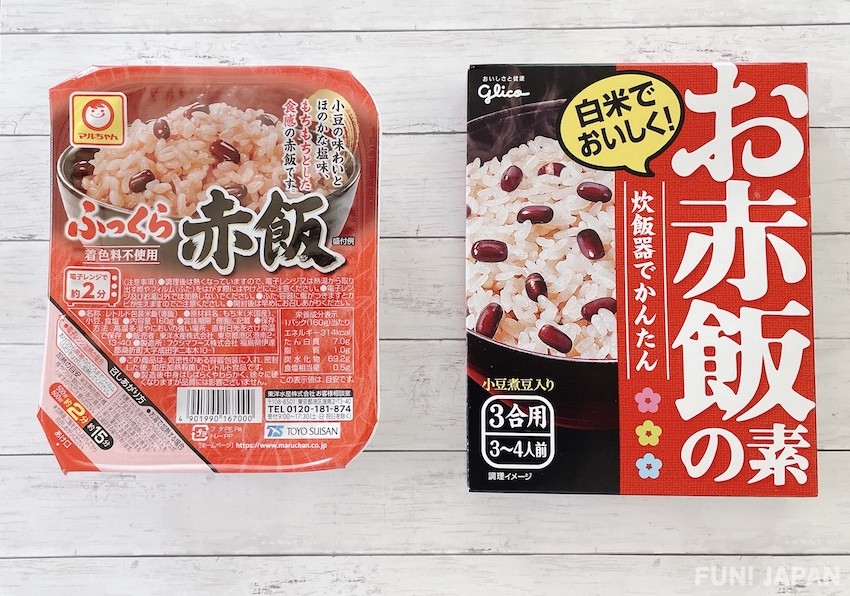
You can gather ingredients such as glutinous rice and azuki red beans and make them at home, but recently, you can easily buy instant O-Sekihan and O-Sekihan ingredients pack at supermarkets and 100-yen shops. It can be eaten not only for celebrations, but also for dinner, rice balls, and even o-bento lunch boxes.
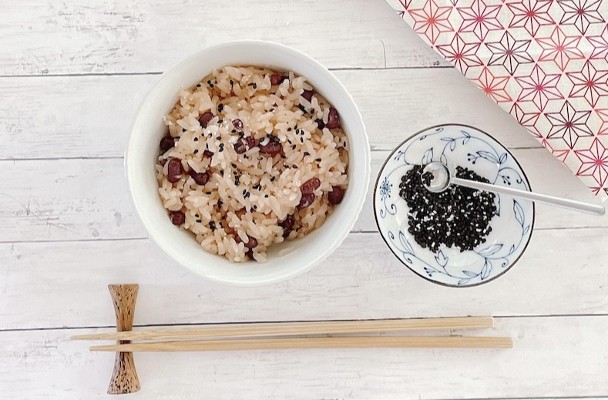

Comments